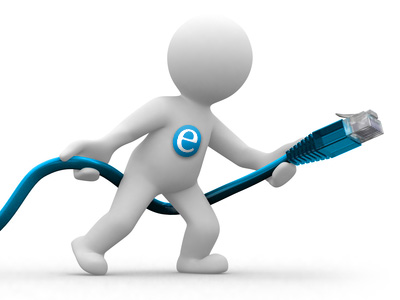I spend a good amount of time reading about Big Data (after all, this is a Big Data blog), but even those who have a casual interest in it probably have noticed that for all the buzz, most of it is focused on what we will be able to do with Big Data — someday.
As I wrote in my previous post, the vision and promise of how Big Data could transform every sector of business has been the focus of nearly every article, blog post and interview about Big Data. The vision and promise lies in the ability to make better decisions and predictions faster, often in real time, based on better, more complete data. Who among us can’t benefit from making better decisions and predictions?
Along with the vision and promise, however, come Big Data’s infrastructure challenges. There are significant demands both in technology and talent. As a result of these challenges, and the expense associated with them, much of Big Data’s potential remains untapped. That’s why most of the blogs and articles I see are about what we might be able to do with Big Data a few years from now.
 While many are looking into their crystal balls, I’ve noticed that some smart companies with the resources to overcome the infrastructure challenges are actively plugged into and benefiting from Big Data, and gaining significant competitive advantages.
While many are looking into their crystal balls, I’ve noticed that some smart companies with the resources to overcome the infrastructure challenges are actively plugged into and benefiting from Big Data, and gaining significant competitive advantages.
A good example is Amazon. You might be familiar with Amazon’s personalized product recommendations. They come from Big Data, data that Amazon is capturing from you, me and other customers. The data allows Amazon to do a better job of putting products in front of customers’ eyes that they are more likely to buy, which increases its chances of upselling to them. The end result: more stuff and lighter wallets for us, higher profits for Amazon.
How can Human Resources, like Amazon, benefit from Big Data, today? Well, as I said earlier, everyone can benefit from making better decisions and predictions faster, and HR, especially at large corporations, has tremendous amounts of data, both from job applicants and employees, to take advantage of.
Bersin by Deloitte said its research showed that all companies can use Big Data in their people strategies. As an example, it noted that one financial services organization “analyzed high-performers in its sales organization and then used those factors (called ‘dimensions’) to screen candidates, raising first-year sales performance by more than 20 percent.”
Another good example is Xerox. According to the Wall Street Journal, Xerox used Big Data to reduce its call-center job attrition by a fifth after software revealed that employees with certain personality traits tended to stick around longer, and that prior call-center experience had no impact on longevity.
So, HR does have some cool Big Data success stories. For the most part, however, HR departments find themselves on the sidelines of Big Data. I think it’s safe to say that few, if any, HR departments are going to get the budgets to implement their own Big Data infrastructures. The best most HR departments can hope for is to be included in their companies’ overall Big Data plans, but HR is likely to be closer to the back of the line than the front.
What are HR departments to do? They can continue to wait on the sidelines, or they can find a way to get in the Big Data game and start making faster and better decisions and predictions.
Big Data derived insights are touted as being able to provide a company a competitive advantage. Companies that are looking to gain that advantage in the area of talent acquisition can now engage in eQuest’s Big Data for HR as a service. This low-risk, cost-effective solution, allows HR departments to quickly and easily plug into the power of Big Data without having to take on the risk and effort of creating an internal Big Data capability – while still deriving all the value of such an effort. The service gives them the ability to accurately predict the best venues for their recruitment marketing efforts and provides them the insights regarding the effectiveness of those campaigns in real-time.
World-class talent acquisition teams are focused on candidate and hiring manager engagement. Each position requires that there be a timely, robust talent pipeline for the recruiters to draw from. By using Big Data-informed sourcing strategies and the real-time analysis of their recruitment campaign effectiveness, our customers are able to keep their focus on engagement vs. struggling to build those required pipelines. By leveraging these Big Data derived insights, they are able to stay focused on the strategic components of the talent acquisition process.
So, while I can see why most of the buzz about Big Data is about its future, it also has great value for the present, including for HR. You can do Big Data, and improve your talent acquisition. Today.
I look forward to your comments!
To learn more about Big Data and its applications to HR, check out eQuest’s new article, “Big Data: HR’s Golden Opportunity Arrives.”
2 thoughts on “You Can Do Big Data, Today!”